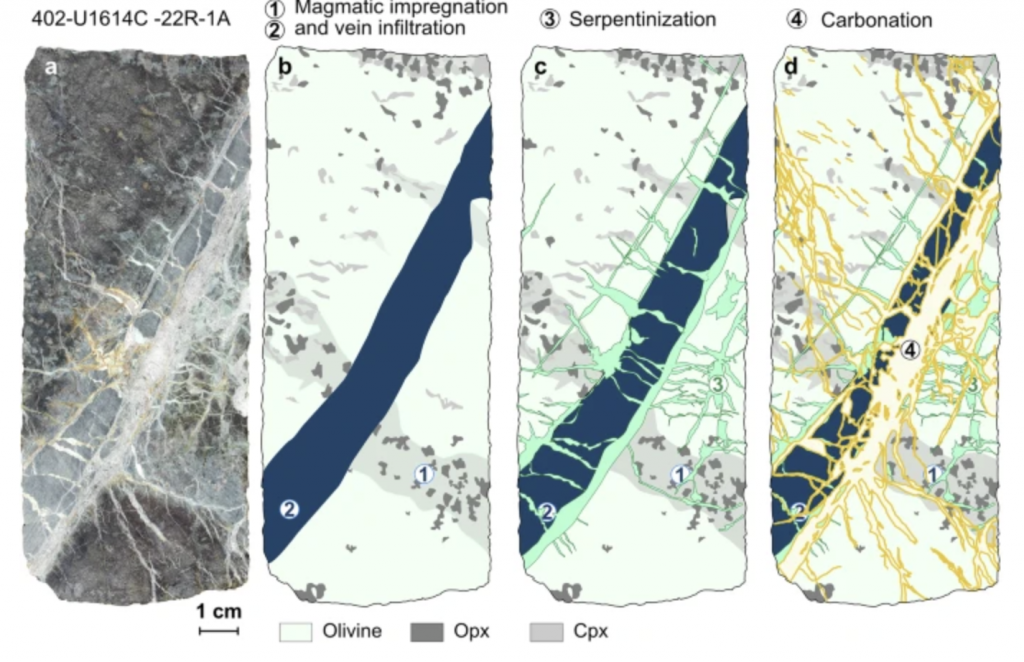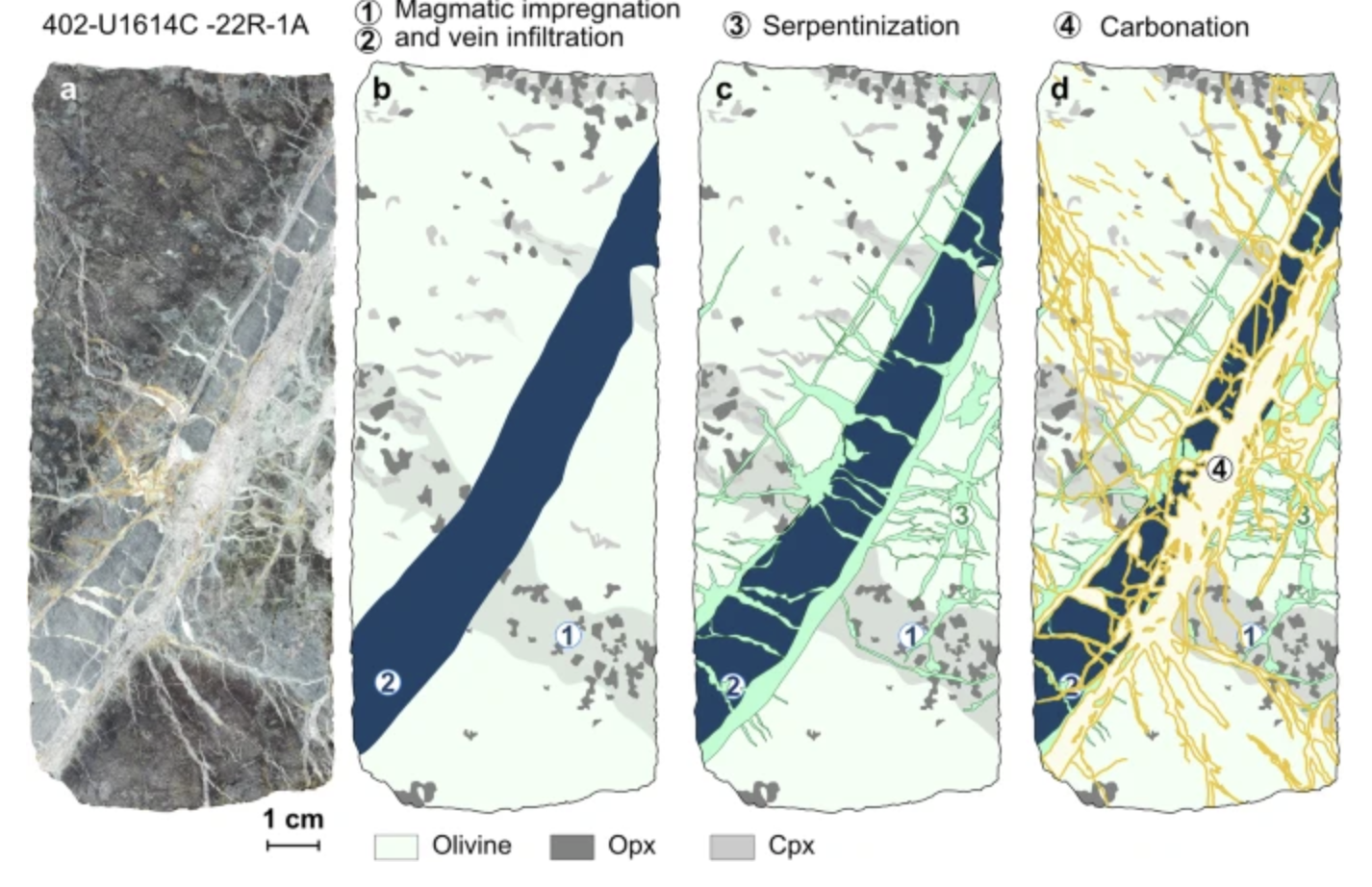Mantle processes control plate tectonics and exert an influence on biogeo-
chemical cycles. However, the proportion of mantle sampled in-situ is minimal,
as it is buried beneath igneous crust and sediments. Here we report the
lithological characteristics of two mantle sections from an embryonic ocean
drilled by the International Ocean Discovery Program (IODP) in the Tyrrhenian
Sea. Contrary to the mantle drilled at Mid Ocean Ridges (MORs) and hyper-
extended passive margins, our ndings reveal exceptionally heterogeneous
and fertile mantle lithologies, ranging from fertile lherzolites to depleted
harzburgites and dunites, interlayered with pyroxenites. Plagioclase- and
clinopyroxene-rich layers, hydrous potassic magmatic veins, and mafic intru-
sions indicate substantial mantle refertilization and delayed inception of
magmatic crust. We propose that magma-poor rifts do not require a chemi-
cally depleted mantle, too refractory to melt. Deep lithospheric processes such
as mantle refertilization and prolonged lithospheric thinning delayed melt
focusing and the formation of a steady-state spreading center.

![]()

